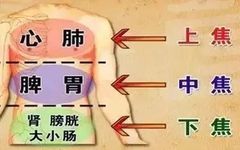If we fall ill, those around us often ask with concern: where does it hurt? In Traditional Chinese Medicine (TCM) terms, any disease, when viewed from the symptoms, is fundamentally about the exterior and interior. We often say: a person lives by a breath of Qi. The maintenance of life and the health of the body depend on the smooth flow of Qi, and if the Qi and blood are blocked, it is merely a matter of the upper jiao, middle jiao, and lower jiao. In other words, any disease exists between the upper and lower, exterior and interior.
1. If the Middle Jiao is blocked, then the Upper Jiao is hot and the Lower Jiao is cold
1
What is the San Jiao (Three Jiao)?
Many friends who have seen a TCM practitioner often hear the doctor say: fire rises while cold sinks; your middle jiao is blocked, hence “the upper jiao has fire, and the lower jiao has cold.” This simple statement contains several terms, so what are the upper jiao, middle jiao, and lower jiao?
The upper jiao, middle jiao, and lower jiao collectively referred to as the San Jiao, is a unique term in the organ theory of TCM, being one of the six fu organs, and is the largest of the fu organs, also known as the external fu or solitary organ.

In overview of the San Jiao, the area above the diaphragm is the upper jiao, which includes the heart and lungs; the area from the diaphragm to the navel is the middle jiao, which includes the spleen and stomach; and the area below the navel to the two yin is the lower jiao, which includes the liver, kidneys, large and small intestines, bladder, and uterus. The liver, based on its location, should belong to the middle jiao, but due to its close relationship with the kidneys, it is classified with the kidneys in the lower jiao. Thus, the function of the San Jiao is essentially a summary of the functions of all the five zang and six fu organs.
We can use a vivid analogy: the San Jiao is like a large passageway in the human trunk. The meridians mainly run along the limbs, akin to a two-lane road, while the San Jiao runs along the trunk of the body, encompassing the majority of the meridians, akin to an eight-lane highway. Therefore, unblocking the San Jiao is more important than unblocking any single meridian.
2
Why is there “heat above and cold below”?
TCM summarizes the main functions of the upper, middle, and lower jiao with the phrase: the upper jiao is like mist, the middle jiao is like fermentation, and the lower jiao is like a drain.
The upper jiao is like mist: the upper jiao distributes Qi and blood to the heart and lungs, resembling the diffusion of mist and dew, nourishing and warming all the organs and tissues;
The middle jiao is like fermentation: the middle jiao’s spleen and stomach digest and transform food and fluids, thereby generating Qi and blood;
The lower jiao is like a drain: the lower jiao conducts waste and excretes urine and feces.
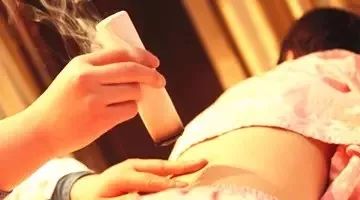
In the circular movement of the body, fire needs to descend from above to warm the kidney water, while water needs to rise from below to nourish the heart fire. Fire naturally rises, and water naturally sinks; therefore, to have fire descend and water rise, a force is needed to propel this, and this force is the middle Qi, which is key to the rise and fall of Qi. The “middle Qi” is generated by the spleen and stomach; if their function is weak, the middle Qi will be insufficient, leading to blocked Qi pathways, preventing fire from descending, resulting in “heat above,” while kidney water cannot rise due to lack of warmth, resulting in “cold below.” In other words, if the spleen and stomach are strong, then the middle Qi is sufficient, the middle jiao is open, and the upper and lower jiao are connected, allowing Qi and blood to form a complete circuit.
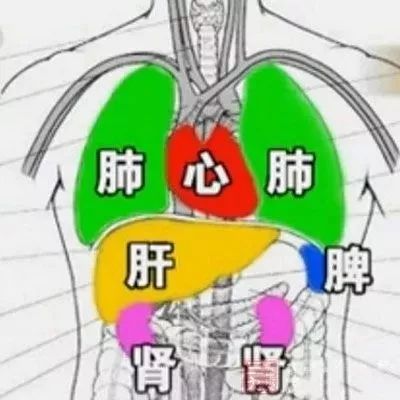
Thus, the spleen’s rising Qi and the stomach’s descending Qi maintain the energy exchange between the upper jiao (heart and lungs) and the lower jiao (liver and kidneys)—when the spleen Qi rises, the kidney water ascends, and when the stomach Qi descends, the heart fire lowers, allowing the heart fire and kidney water to interact in the middle jiao. At the same time, when the spleen Qi rises, clear Qi ascends to nourish the heart, lungs, and brain, while when the stomach Qi descends, turbid Qi descends to expel waste.
Clinically, if a person exhibits symptoms of “heat above and cold below,” or if issues arise between the upper and lower jiao due to the middle jiao’s inability to communicate, TCM often suggests treating from the middle jiao, focusing on regulating the spleen and stomach.
3
How to perform moxibustion for a blocked middle jiao?
As mentioned above,the blockage of the middle jiao focuses on regulating the spleen and stomach, with common acupoints including Pishu (Spleen Shu), Weishu (Stomach Shu), Zhongwan (Middle Cavity), Zusanli (Leg Three Miles), and Taibai (Great White). If there is spleen Qi deficiency, moxibustion can be added at Qihai (Sea of Qi); if there is heavy spleen dampness, moxibustion can be added at Yinlingquan (Yin Mound Spring), Fenglong (Abundant Dragon), and Jiexi (Stream Divide).
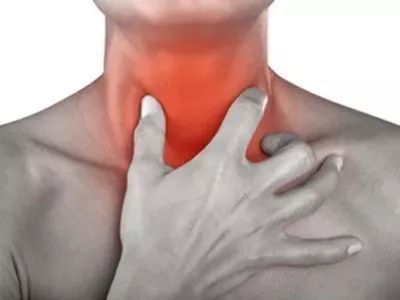
However, it is important to note that individuals with a blocked middle jiao are prone to excessive heat after moxibustion. To address this situation, there are generally two methods:
One: Directing Fire Downward
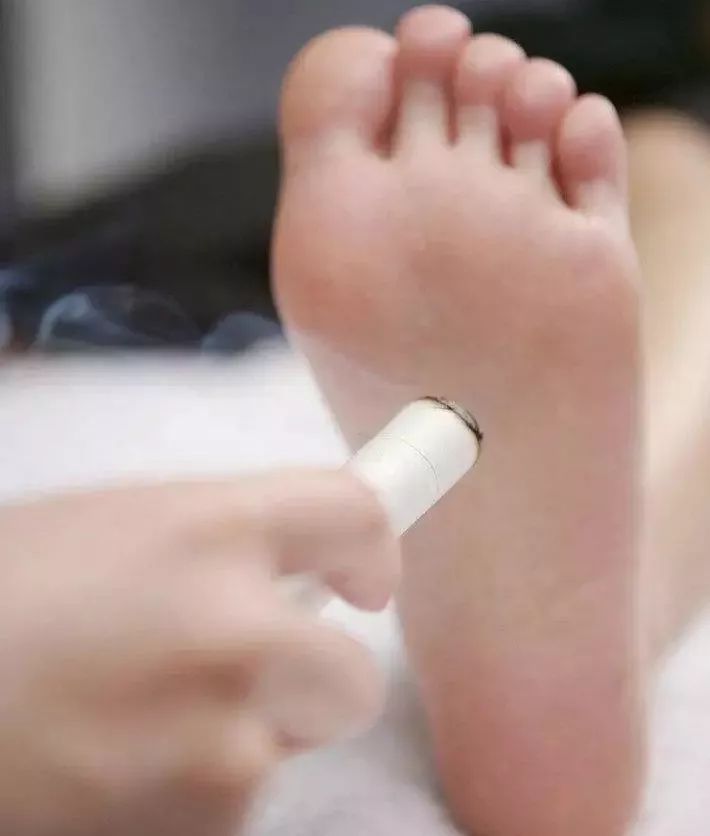
This is the method most people tend to choose, primarily using moxibustion on the lower jiao and acupoints on the legs to direct the fire downwards, commonly used points include Zusanli, Yinlingquan, Sanyinjiao (Three Yin Intersection), and Yongquan (Gushing Spring). Additionally, it is recommended to soak the feet in hot water before moxibustion to direct the fire downwards; warming the legs opens the meridians, allowing the fire from the upper jiao to descend.
Another: Heavy Moxibustion at Guanyuan
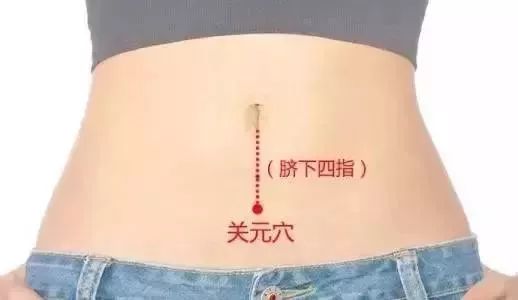
This is a method particularly advocated by moxibustion expert Wang Zhenglong. He believes that: excessive heat after moxibustion indicates that the yin pathogen is about to disperse; at this time, one should take the opportunity to perform heavy moxibustion at Guanyuan.
The human body has self-regulating functions, and the rise and fall of yin and yang within the body follow fixed patterns; when the vital energy is sufficient, yin and yang will operate regularly, rising when they should rise and descending when they should descend, thus there is no need for artificial manipulation through methods like directing fire downwards. Guanyuan is the gateway for the vital yin and yang energies to be stored; moxibustion at Guanyuan can invigorate the true fire of the gate, replenish the vital energy, and restore the function of “storing without leaking,” allowing the scattered heat to return, thus the symptoms of excessive heat will naturally disappear, eliminating the need for directing fire downwards. He suggests moxibustion at Guanyuan and Zhongwan together to accelerate the expulsion of the yin pathogen.
Therefore, if excessive heat after moxibustion is particularly severe, one can pause for a few days or reduce the amount of moxibustion to allow the body to gradually adapt; if tolerable, it is recommended to proceed with heavy moxibustion at Guanyuan and Zhongwan. Although symptoms of excessive heat may still persist in the short term, persistence will lead to their natural disappearance.
2. If the Exterior and Interior are Disharmonious, the Root Lies in Shaoyang and Jueyin
1
What is the Exterior and Interior?
The exterior and interior are two principles for distinguishing the location of disease, the severity of the condition, and the trend of the disease.
The exterior and interior are relative concepts; for example, the skin and muscles are considered exterior, while the internal organs are considered interior; conversely, the organs are considered interior, while the fu are considered exterior.
In the differentiation of exterior and interior, the exterior and interior mainly represent the external and internal locations of the disease and the depth of the condition. External pathogens invade the exterior, often in the early stages of illness and generally mild; when the internal organs are affected, it indicates that the pathogen has penetrated deeper, often seen in the middle to late stages of external diseases, and is generally more severe.
When seeking treatment from a TCM practitioner, the differentiation of exterior and interior is commonly used, aiming to understand the severity of the condition, clarify the depth of the disease location, and predict the development of the condition to gain the initiative in treatment.
2
What is Shaoyang Syndrome?
Shaoyang syndrome is one type of syndrome among the “Three Yang” syndromes. The “Three Yang” refers to Taiyang, Yangming, and Shaoyang.
In the “Shang Han Lun” (Treatise on Cold Damage), it is mentioned: “Fever with aversion to cold arises from Yang; no fever with aversion to cold arises from Yin.” This statement clearly indicates that fever and aversion to cold are common characteristics of the “Three Yang” syndromes. However, there are distinctions between exterior syndrome, interior syndrome, and half-exterior half-interior syndrome.
Taiyang Syndrome: This is an exterior syndrome, treated with sweating to release the exterior. Common symptoms include: fever, aversion to cold, stiffness in the head and neck, and floating pulse. Among these, aversion to cold without sweating and a floating tight pulse is called an exterior excess syndrome; sweating with fear of wind and a floating weak pulse is called an exterior deficiency syndrome; fever, thirst, desire to drink, and difficulty urinating is called a water retention syndrome. The unique symptom of Taiyang syndrome is stiffness in the head and neck. Yangming Syndrome: This is an interior syndrome, divided into two types: fever, aversion to heat, irritability, profuse sweating, great thirst, and a flooding pulse is called an interior heat syndrome; tidal fever, delirium, abdominal pain, constipation for several days, and a deep, solid, forceful pulse is called an interior excess syndrome. The unique symptom of Yangming syndrome is a full stomach, indicating gastrointestinal dryness and heat. Shaoyang Syndrome: This is a half-exterior half-interior syndrome, common symptoms include: alternating chills and fever, bitter taste in the mouth, dry throat, dizziness, fullness and pain in the chest and hypochondria, lack of desire to eat or drink, irritability, and a wiry pulse. The unique symptoms of Shaoyang syndrome are bitter taste in the mouth, dry throat, and dizziness.
In Shaoyang syndrome, there is no Taiyang exterior syndrome, indicating that the pathogen is not in the exterior, hence sweating is not appropriate (as sweating would deplete fluids and allow the pathogen to penetrate inward); there is no Yangming interior excess syndrome, indicating that the pathogen is not in the interior, hence purging is not appropriate (as purging would lead to yin deficiency and fire movement, easily causing fright); there is no excess pathogen in the chest, hence vomiting is not appropriate (as vomiting would harm yang and cause palpitations). Therefore, Shaoyang has three prohibitions (prohibition of sweating, prohibition of purging, prohibition of vomiting), and the treatment principle should focus on harmonizing the exterior and interior (i.e., a method of relieving heat without sweating). However, since Shaoyang syndrome often involves both exterior and interior, it can be treated with a combination of exterior sweating methods or Yangming purging methods, depending on the symptoms.
3
How to perform moxibustion for exterior and interior disharmony?
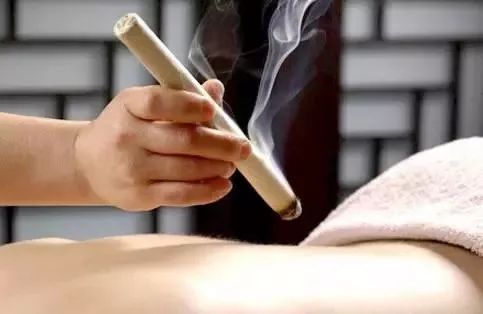
Shaoyang plays an important role in the relationship between the exterior and interior,because the pathway between the exterior and interior lies in Shaoyang.
From the perspective of meridians, Shaoyang includes the Hand Shaoyang Sanjiao Meridian and the Foot Shaoyang Gallbladder Meridian, and is interrelated with the Hand Jueyin Pericardium Meridian and the Foot Jueyin Liver Meridian. We can also infer from the symptoms: the Gallbladder Meridian runs along the two sides of the body; if the Gallbladder Meridian is blocked, it will cause fullness and pain in the chest and ribs; the Sanjiao Meridian connects to the Pericardium, and if the heart Qi cannot flow smoothly, it will lead to irritability. Therefore, to address exterior and interior disharmony, it is essential to unblock four meridians: the Sanjiao Meridian, Gallbladder Meridian, Pericardium Meridian, and Liver Meridian.
The Qi of the exterior comes from the Qi of the interior; only when the interior Qi is sufficient can the exterior, half-exterior half-interior Qi resist external pathogens. The material for moxibustion is mugwort, which has medicinal properties that can “travel through the three yin and connect to the twelve meridians,” capable of both releasing the exterior and entering the interior—releasing the exterior can expel pathogens outward; entering the interior can generate interior Qi and transport it to the surface, thus assisting the exterior in resisting pathogens while also unblocking the middle jiao. If the middle jiao is free of pathogens, then the upper and lower jiao can communicate. In this way, the half-exterior half-interior pathogens can be completely eliminated.
To reiterate,unblocking the upper and lower jiao requires unblocking the Qi mechanism of the middle jiao, which necessitates moxibustion to regulate the spleen and stomach to smooth the middle Qi; harmonizing the exterior and interior requires sufficient interior Qi, and when the interior Qi is sufficient, the pathogenic Qi can be expelled, which requires moxibustion to supplement the Yang Qi to support the righteous Qi.Moxibustion allows the entire body to be connected by Qi, naturally unblocking the upper and lower jiao, harmonizing the exterior and interior, leading to a robust body.

